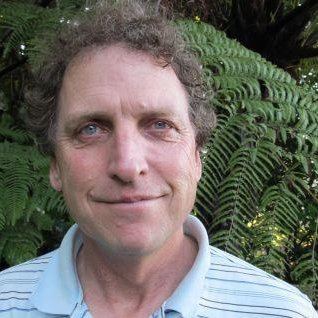Kiwi biological controls set for world domination
By Peter Kerr for sticK
(sticK - Nov. 4 2010 )
When he set
out to produce a biologically-based pesticide, Pukekohe
plant pathologist Stephen Ford advertised and asked the
general public to send in dead insects that were covered in
fungus or had died for no apparent reason.
From literally thousands of insects sent to Greentide Ltd., Ford initially selected 105 fungal strains, and settled on six.
“We had to put in place robust screening practices, with the number one criteria to be no human toxicity,” Ford says. “They also had to be physiologically dormant or dead at 37 degrees – we didn’t want them having the ability to grow in peoples’ lungs.”
Ford said that these entomophathogens fungi, (entomopathogens may also include bacteria, viruses and nematodes) had to pass five critical processes before being considered as a biological candidate.
This kicked off his research 12 years ago, but it took until 2006 before Ford came up with a stable formulation that could be used in New Zealand’s main vegetable-growing region of Pukekohe and which he considered would be the control equivalent of chemical pesticides.
It bombed; again indicating to growers that while biological controls may be good in theory, they were still failing in practice. “It was one of the most humbling experiences of my life,” he says.
rel="canonical" href="
http://sticknz.net/2010/11/04/kiwi-biological-control-products-set-for-world-domination/
target="_blank">Click to read the rest of this
story
http://sticknz.net/2010/11/04/kiwi-biological-control-products-set-for-world-domination/
For sticK – science, technology, innovation &
commercialisation KNOWLEDGE - is a new Wellington based
news service concentrating on following the money from ideas
to income. Contact editor Peter Kerr at peter.kerr055 @
gmail.com



 NZAS: New Zealand Association Of Scientists Awards Celebrate The Achievements Of Scientists And Our Science System
NZAS: New Zealand Association Of Scientists Awards Celebrate The Achievements Of Scientists And Our Science System Stats NZ: Retail Spending Flat In The September 2024 Quarter
Stats NZ: Retail Spending Flat In The September 2024 Quarter Antarctica New Zealand: International Team Launch Second Attempt To Drill Deep For Antarctic Climate Clues
Antarctica New Zealand: International Team Launch Second Attempt To Drill Deep For Antarctic Climate Clues Vegetables New Zealand: Asparagus Season In Full Flight: Get It While You Still Can
Vegetables New Zealand: Asparagus Season In Full Flight: Get It While You Still Can  Bill Bennett: Download Weekly - How would NZ telecoms cope with another cyclone
Bill Bennett: Download Weekly - How would NZ telecoms cope with another cyclone NZ On Air: Firm Audience Favourites Lead NZ On Air Non-Fiction Funding
NZ On Air: Firm Audience Favourites Lead NZ On Air Non-Fiction Funding



